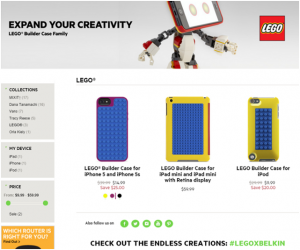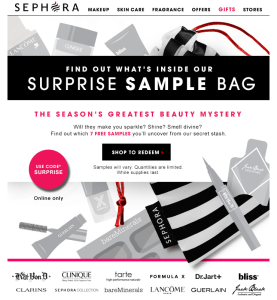
Google Shopping Ads, also called Product Listings Ads (PLAs), are an efficient and affordable way to drives sales for your business. PLAs help to capture customers at their moment of shopping intent due to their prominent placement on search results pages and their more visual format.
Shopping campaigns are often lumped in with traditional paid search campaigns, but they’re actually quite different. Yes, they’re based on a cost per click pricing model. And yes, they can be managed within the AdWords interface. But that’s really where the similarities end.
To be successful with PLA campaigns, you need a unique strategy and specific tactics. Before we get into some of these different approaches, let’s first learn more about PLAs.
What are PLAs?
Product listings are targeted by products and product categories, not keywords. Advertisers set a bid on a product, and then Google decides which keywords are relevant. How Google decides what is relevant is based on information submitted through a data feed. This data feed includes loads of information, such as product name, category, image, pricing, color, size, availability, brand and description.
PLAs display at the top and in the upper right corner of search results. Now that Google has removed right side ads from desktop search results, PLAs are the only ads that show in this position.

Google PLAs displaying at the top of search results.

Google PLAs displaying in the upper right corner of search results. As of February 2016, these are the only type of ads that show in this position on desktop.
The data feed for PLA campaigns must be submitted through Google Merchant Center. After linking your Merchant Center and AdWords accounts, you can then set up campaigns and ad groups within AdWords.
Now that you understand what Product Listing Ads are, let’s talk about how to make them work for your business.
Here are nine tips for managing and optimizing your Google Shopping campaigns.
1. Larger Feeds Get Better Exposure
The more products in your feed, the quicker Google is in picking it up and showing your products. Smaller feeds (i.e., less than 500 products) can still show in Google Shopping, but may not have the impact that a larger feed would.
If you only have a few products, start with a single ad group, rather than breaking out the account into multiple ad groups or product categories. This will help you determine if Google Shopping is right for you because you can better track and optimize performance through this single ad group.
2. Optimize Your Feed with SEO Tactics
Because you aren’t bidding on keywords for product ads, you don’t have full control of when Google will show them. You do have control, however, over the content found within your data feed. Here you can modify the product title, description, and product type to include relevant terms.
Much like with SEO, the title is the most important element. Consider including brand name, color, size and material in the product title. Be careful not to keyword stuff though. Instead, make sure your title (as well as description) are clear, descriptive and useful for the customer.

Example of a Google PLA where the product title has been optimized to contain brand, style, color, size and product details.
3. Include Negative Keywords
While you can’t select keywords that your PLAs should show on, you can add negative keywords to indicate which they should not show on. Start by adding known irrelevant terms, then continue to review your search terms report to identify low performing terms. Negative keywords can be used at the campaign level, or added to specific ad groups.
Let’s say you sell shoes for women, but not men’s or kids shoes. You would want to add [-mens], [-male], [-kids] and [-childrens] to your negative keyword list so your product listings don’t show for queries with these terms.

Add negative keywords at the campaign level, as shown here, or the ad group level.
4. Focus on Best Selling Products
This one is somewhat of a no-brainer. You should focus efforts on your best selling products. Consult your BigCommerce analytics or Google Analytics data to see which products are selling well. Add these best sellers to a specific ad group and raise the bids to increase exposure of these popular and profitable products.
If a product isn’t performing well in Google Shopping, remove it from it’s current category and place in a new ad group with a lower bid.

Start by looking in the “Products” section of AdWords to find top or lowest performing products, which may be placed in separate ad groups for modified bids.
5. Send Your Feed to Google Every Day
Providing your data feed to Google on a daily basis will ensure that all information is current and accurate. This can help to increase likelihood of placement, as Google favors merchants that provide consistent and clean data. It also creates a better experience for searchers, making sure that the information they see in the ad is the same information they see when they click through to your site.

Set up scheduled fetches so that Google automatically pulls and updates your product information throughout the day.
6. Strategically Select Your Product Images
Ensure that each product has a relevant, targeted image. Use photos that differentiate your product from others listed in Google Shopping ads, helping your ad stand out among the competition.

Notice how the highlighted ad contains background details, making it stand out among the other bike that are on a simple white background.
7. Optimize Feed for Automated Extensions
Last August, Google announced the release of automated extensions that show promotional messaging in PLAs. Automated extensions use information you submit to Merchant Center and through your data feed to show free shipping or price drops. Ensuring these messages can be found in your feed will increase likelihood of extensions being added to your ads.
It’s possible to add other types of promotional messages, such as % off or BOGO. To do this, however, you must follow some strict guidelines and request access from Google.
8. Make Yourself Eligible for Ratings & Review Count
Sometimes Google will show a star rating and review count under the product title in PLAs. These ratings can help make your ad stand out, and showcase the quality of your product. The ratings and reviews are aggregated from multiple sources, such as your site, third-party aggregators, editorial sites and users.

Example of PLAs with ratings and review count included.
For a rating to show on your ad, you must have at least three reviews on any single product, and at least 50 reviews across all products. By asking your customers to leave reviews on various sites, you can grow the overall count and make yourself eligible for this benefit. Once you’ve amassed enough reviews to be eligible, you must send a request to Google to have reviews added.
9. Make Sure to Include GTINs
Beginning on May 16, Google is requiring that all retailers provide Global Trade Item Numbers (GTIN), more commonly known as UPCs in the United States, on all new in-stock products advertised through Shopping campaigns. Google states that GTINs help them determine the exact product and brand being sold, and thus increase exposure because they have more details on the product.
If you source products from local or boutique manufacturers that do not have GTINs, however, you may not be able to run Google Shopping campaigns. They’ve stated that handmade or fully custom products would not need these identifiers, but we won’t know for sure until after the new rules go into effect in mid May.
Product Listing Ads are a great complement to your existing AdWords campaigns. By following these nine tips, you can have better success at driving more customers to your site and increasing sales.
Have you seen particular success with a Product Listing Ad campaign? Let us know in the comments below.
Photo: Flickr, Jon Russell
Digital & Social Articles on Business 2 Community(117)







